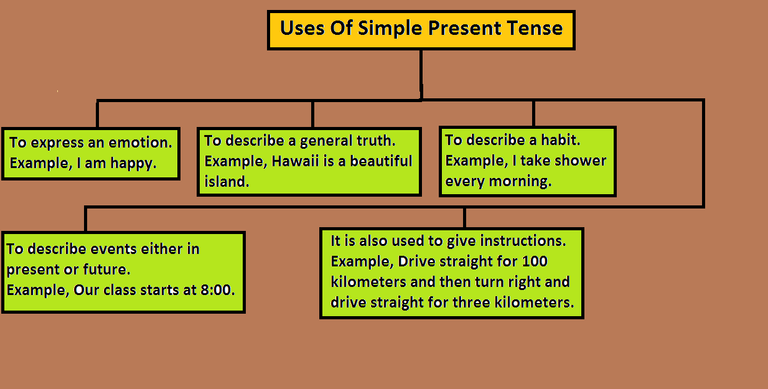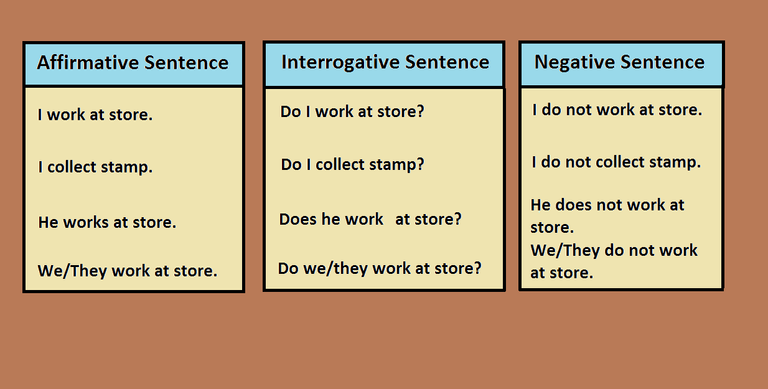This is my second tutorial post for learning the basics of English. In my last post, I discussed about Present Tense with the help of examples. I hope it helped you to get an understanding of what really is a Present tense in general. Today, I will try to define a type of Present tense which is called Simple Present Tense.
What is a Simple Present Tense ?
Simple Present Tense :
A simple present tense is a form of present tense which defines or describes a habit, general truths, fixed arrangements and unchanging situations. In simple present tense we use first form of verb e.g, I make, we make, they drink, you work etc. But if the noun is in the form of third person singular then an 's' is added with the verb e.g, he makes, she makes.
How a Simple Present Tense is used :
Now with the help of a chart, I will explain how where and when we can use simple present tense with the help of examples.

(My own creativity)
Lets understand how can we make an affirmative, interrogative and negative sentence using simple present tense. Before that I will explain these three kinds of a sentence.
1. Affirmative Sentence :
An affirmative sentence is a kind of sentence which is used to check the truth of a statement. It is also called positive form of a sentence.
2. Interrogative Sentence :
Interrogative is derived from the word interrogation which means questioning. Interrogative sentence is a kind of sentence which is used for questioning.
3. Negative Sentence :
As from its name negative, we can understand that it is a kind of sentence which tells that the given statement is false. Its really easy to make a negative sentence. Just by using the word "not" after the auxiliary or helping verb, we can create negative of a sentence.
Examples of using Simple Present Tense to make affirmative, interrogative and negative sentence :

(My own creativity skills)
In the third example, in the affirmative sentence we put 's' with the verb (work) because he (as a third person singular) is used, so the verb always end with a 's' . But in the interrogative and negative sentence we use does (the third person of the auxiliary do) + the infinitive of the verb.
In the other three examples, we use first form of verb(work, collect) in all three kinds of sentence. But in the interrogative and negative sentence, we use the auxiliary verb do as well.
I hope this helps you to get an understanding of Simple Present Tense and how to use it to make an affirmative, interrogative and negative sentence.
Please give your feed backs for future posts.
Great post. Very helpful for those who want to learn tenses.
Thanks for appreciating my work.
You are welcome
Beautiful post. Keep it up.
Thank you.
Your are welcome...
grammar is must for language. nice effort.
Yes of course, it is must. Thank you.
Thanks for this tutorial! I am a Communications Coach and would love to share blogs like this with you. Do you have any upcoming blogs regarding grammar and tenses?
Yea. I will be making more of these English tutorial posts. I am glad that you are interested in English grammar too. Thank you.... :))
I must say I love this Energy.
We really can't underestimate the importance of English as a language.
As there is always a need to communicate with a general language. Thumbs up.waiting to read more.
That's why I am making these tutorials to help people to improve and get a better understanding of this useful language. Thank you.